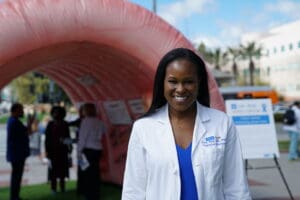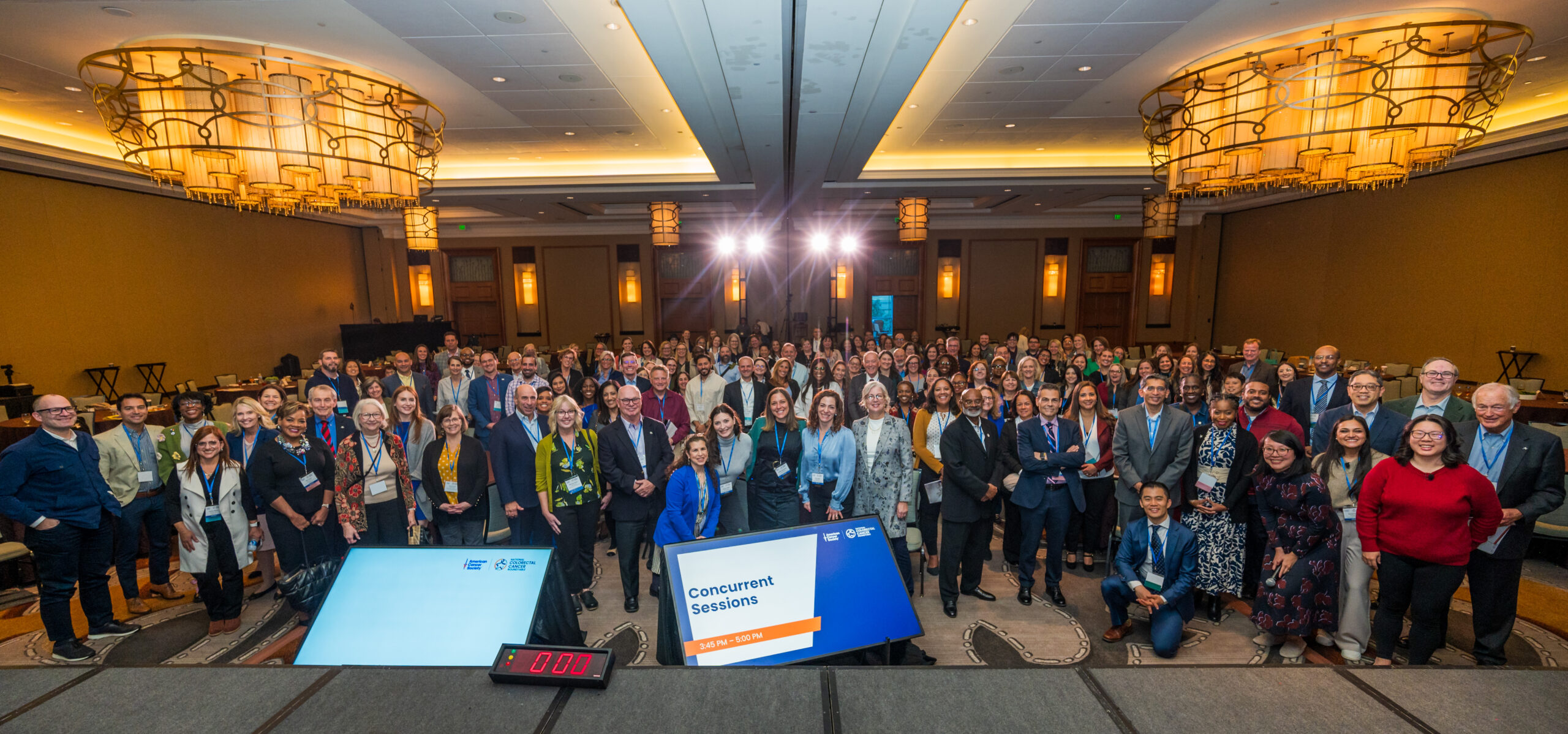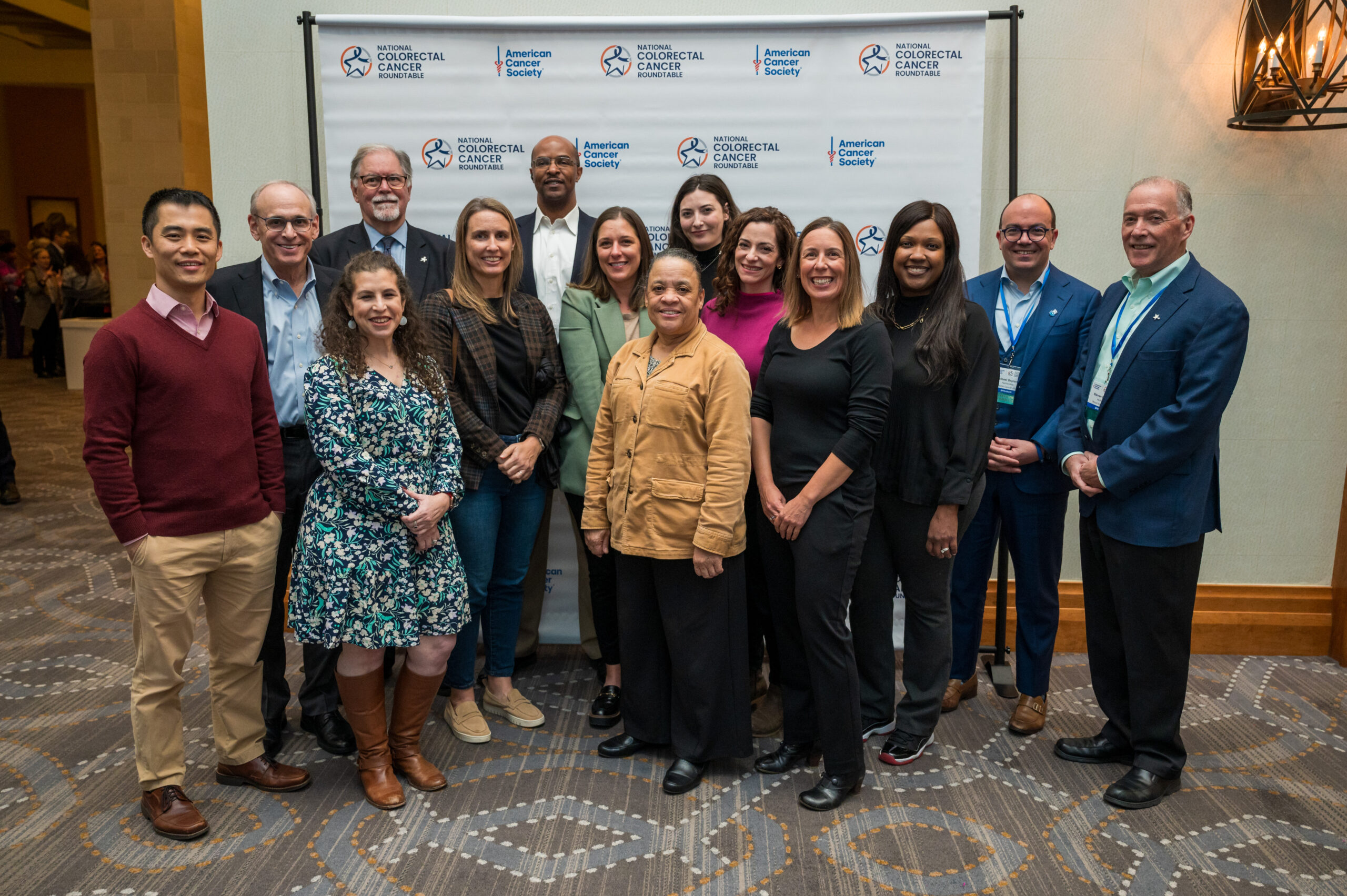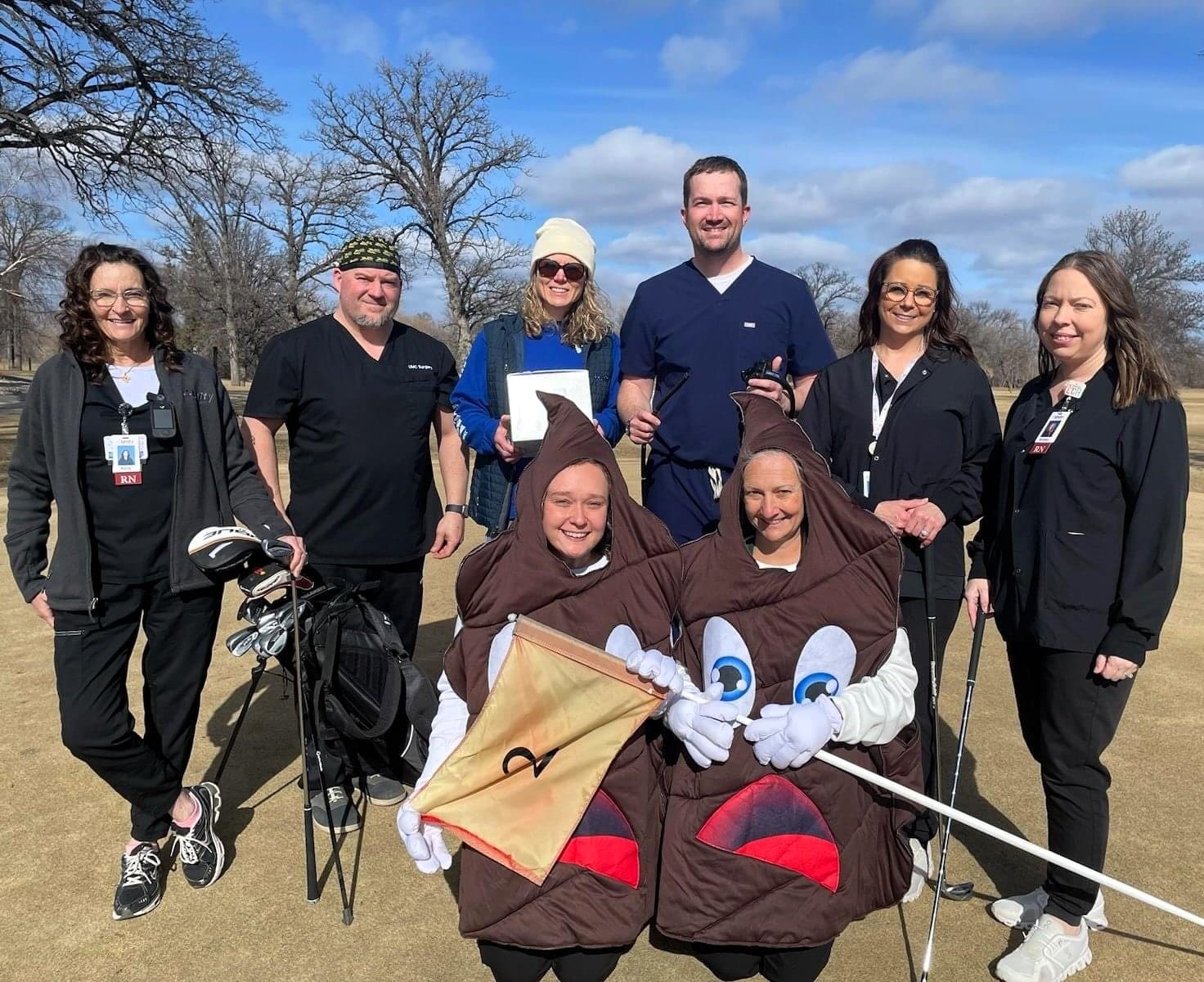Interview with UCLA Health—Grand Prize Recipient of the 2021 80% in Every Community National Achievement Award

July 27, 2021 – Author: Folasade May, MD, PhD, MPhil
On March 1, UCLA Health became the Grand Prize recipient of the 2021 80% in Every Community Awards, a program designed to recognize individuals and organizations who are dedicating their time, talent and expertise to advancing needed initiatives that support the shared goal to achieve colorectal cancer screening rates of 80% and higher.
 My name is Fola May. I am a Gastroenterologist and health services researcher at UCLA Health and focus on colorectal cancer prevention and health care disparities. I am also the Director of Quality Improvement for Digestive Diseases. In that capacity I help run health system efforts to improve quality of care for patients with gastrointestinal and liver diseases.
My name is Fola May. I am a Gastroenterologist and health services researcher at UCLA Health and focus on colorectal cancer prevention and health care disparities. I am also the Director of Quality Improvement for Digestive Diseases. In that capacity I help run health system efforts to improve quality of care for patients with gastrointestinal and liver diseases.
Tell us a little bit about UCLA Health and the organization’s colorectal cancer screening program.
UCLA Health is a large, integrated tertiary care medical center in Southern California with over 55 primary care sites and approximately 390,000 primary care enrollees. We also have five endoscopy procedure units that perform about 15,000 screening colonoscopies per year. The health system leadership designated colorectal cancer screening a high priority area in 2018 and since then has committed several resources to our quality improvement program and awareness campaign.
When and why did UCLA Health decide to focus on increasing colorectal cancer screening?
We recognized several years ago that colorectal cancer screening and early detection were areas where we could have much more impact. Our screening rates were quite low at the time—at round 50%. There were also several changes in our health system around that time that supported this new focus: health system leadership embraced the opportunity to improve our screening rates, we extended our capacity for screening colonoscopy by adding endoscopy units, and we started using more stool-based screening tests like the fecal immunochemical test (FIT). We also implemented a new electronic health record (EHR) system at around that time, and that platform allowed us to improve documentation of screening utilization. All of these changes resulted in an ideal environment with the tools, resources, and leadership needed to launch our first systemwide cancer awareness program focusing on colorectal cancer.
What activities and systems changes did you implement, and how did you choose them?
We had three major goals of the campaign. First, we wanted to increase awareness about colorectal cancer risk and screening utilization among UCLA patients, staff, and faculty. Second, we aimed to establish a formal quality improvement program to continuously track and improve care processes related to the screening and early detection of colorectal cancer. Third, we aimed to engage and support community partners throughout Los Angeles County to address colorectal cancer disparities.
We knew very early that we wanted a campaign that addressed patients, providers, our own staff, and beyond. To raise awareness among the patients we serve, we hosted several public events, often using the massive inflatable colon to engage patients walking to or from appointments on campus. We also identified patients with insightful personal stories about getting screened, receiving colorectal cancer care, and survivorship. We have continuously shared these patient stories on social media, and it has become a major means to bring people into the conversation about colorectal cancer.
There were also a few activities we did specifically for UCLA Health staff and providers. We held multiple Dress in Blue Days to raise awareness about colorectal cancer. Employees were also invited to lunchtime lectures about colorectal cancer screening, prevention through nutrition, and overall wellness.
One of our larger public-facing efforts was an informational social media campaign for which we had help from several advocates and influencers, including Kareem Abdul-Jabbar, Tyra Banks, and Maria Menounos. Through social media, we were able to share content—educational videos, webinars, infographics—to reach a broader audience. Several UCLA Health providers participated in radio show interviews, editorials, local television commercials, and information sessions that were geared towards both patients and providers who wanted to learn more about colorectal cancer. Many of these resources are available on our patient resource page.I understand you took a multifaceted approach to your campaign. How did this work?
Our Colorectal Cancer Workgroup is the force behind our quality improvement efforts, which is a major component of the campaign. The workgroup is a multidisciplinary team with representation from gastroenterology, primary care, population health, quality improvement, family medicine, geriatrics, oncology, and surgery. So we have champions in many of our clinical divisions and departments to help us improve care processes related to getting patients screened. In addition, we work very closely with UCLA marketing and media. A lot of the success of our quality efforts and annual campaign comes from having this diverse representation of expertise at the table.
What success have you seen? How did you measure that success?
We try to measure success several different ways. For our first goal to increase colorectal cancer screening rates, we have been actively measuring screening rates and screening modalities for our health system. Despite the COVID-19 pandemic, we’ve been able to maintain a 10 percent increase in colorectal cancer screening for our system. Using more FIT during the COVID-19 pandemic was instrumental.
Other markers of success for the quality improvement program include our FIT mailing program, FIT navigation program, and several additional interventions that we’ve used at the provider and patient levels to increase screening rates. We’ve been able to not only roll those programs out, but also evaluate them and publish the results. I think that’s how we measure the success of the QI part of the campaign.
It is a bit more challenging to measure the impact of our efforts on the broader community and county, but we remain encouraged that we have been able to engage so many people through our website and social media efforts. We have travelled with the inflatable colon to two safety net hospital affiliates that see a larger proportion of medically underserved people of color and non-English speakers. I’m most proud of that community engagement and value that we have been able extend the campaign beyond UCLA.What tips would you offer to others that are working to increase colorectal cancer screening in hospitals and health systems?
My first tip is that it takes a village. You really need to have the right people in the room to do this work in a large health system, and you need to have health system leadership support. I have enjoyed working with my partners in primary care, quality improvement, and population health. And the only reason why any of this work happens is because we embedded our programs in primary care where most colorectal cancer screening originates.
One other tip is to set very specific goals. It was easy for us to stay on task because we had three specific goals. We knew we wanted to increase awareness, increase screening, and implement a QI program. And we focused only on activities related directly to those goals. So having very specific, realistic goals and the infrastructure and resources to achieve them was essential.
Did you leverage any organizational or community partnerships to support your campaign?
We have partnered with the American Cancer Society and with Boston Scientific. Boston Scientific provides our large inflatable colon. We also partner with two local safety net hospitals and an organization of community health workers or promotoras who provide preventive health workshops and trainings in Latino communities in Los Angeles.
Do you have any final tips for our readers who are working to achieve 80% in Every Community?
This work is challenging and time-consuming but also very rewarding and inspiring. I have always loved patient care and my research, but doing this campaign has been an incredible way to work across clinical disciplines in a meaningful way. The stories that confirm the importance of the work are endless.
There was a gentleman we encountered one afternoon when we were out with the inflatable colon. He was walking from the health system to his car with his wife and happened to be leaving from his colonoscopy appointment. They had just left his procedure and they saw the inflatable colon so came by. He proceeded to share pictures from his procedure with all of the other individuals passing by, explaining that he had a polyp and that he was happy that the doctor got it out. He was proud that he had completed his colonoscopy and was telling everyone, “I just got mine. It’s not bad. Go get it done.” It’s moments like those that stick with me—and hopefully with others. We all need to yell from the mountain top that this disease is preventable.
Thank you for sharing your story with us! We look forward to hearing more about your work and UCLA Health’s progress in the future.[vc_widget_sidebar sidebar_id=”sidebar-1″][vc_tweetmeme][vc_facebook]
We Highlight Successes, Leaders, Best Practices, And Tools That Are Making An Impact In The Nationwide Movement To Reach 80% Screened For Colorectal Cancer.
Do you have a suggestion for a future blog topic? We welcome you to share your suggestions by emailing [email protected].
Blog Policy
Opinions expressed in these blog posts are that of the author and do not represent policies of the National Colorectal Cancer Roundtable or the author’s institution.
Our staff moderate all comments on the 80% Blog. While we do not censor based on point of view, we will delete or edit comments that are offensive or off topic. Click here to view full version.
© 2025 American Cancer Society National Colorectal Cancer Roundtable. All rights reserved.


